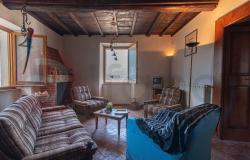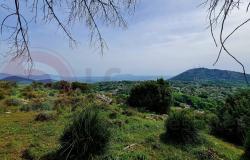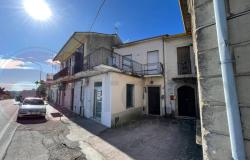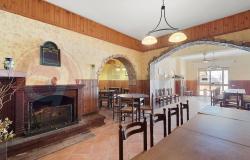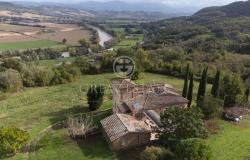I first saw the Giardino di Ninfa in a series on television called ‘Gardens Without Borders’. The enchanting description made me determined to visit this medieval, ruined river garden south of Rome.
To protect the property against the inevitable wear and tear of visitors, Ninfa is now only open on the first weekend of every month. I decided to visit Italy in the middle of May and wanted to include a trip to Ninfa in my tour. After several fruitless phone calls and tour operators who said it was impossible to visit the garden at any other time, I finally came across the telephone number of the secretary Lauro Marchetti, who gave me special permission to visit the garden.
Ancient Beginnings
My first encounter with Lauro Marchetti was on his motorino, his faithful greyhound by his side. This must be the quickest transport to use with the many winding uneven pathways that thread through Ninfa’s 21 acres.
The name ‘Ninfa’ comes from a tiny Roman temple that once stood on the water’s edge, where the River Nympheus enters the garden. Remains of this classical temple were found in the bed of the lake by divers. Ninfa was once a prosperous town that thrived for 600 years between the 8th and 14th century. The town prospered, supporting seven churches all contained within a double walled fortification.
The Caetani family purchased the fortified town in 1297 for 200,000 florins. They were responsible for building a dam that held back the waters, which today form the backbone of the river and streams that flow through the garden. The town’s good fortune was to last but 100 more years, when it was razed to the ground during fratricidal struggles, and the great town was never rebuilt. Malaria did the rest, killing the few peasants that remained. Nature then took its toll and what was left of the ruins was swallowed up by brushwood and bog.
The Love of Three Women
It was rediscovered by Ada, the English wife of the Duke Onorato Caetani. She was one of three women who influenced the transformation of Ninfa into an English-style garden in an Italian landscape. She planted the first roses, which still thrive today, their thick stems supporting them against the ruined building. In 1921 her son Gelasio made the area habitable again by channelling the water from the bog into the river estuary that passes under three ancient bridges. Its course pushes through a series of powerful streams, which in places create tumbling waterfalls and in others gush over each other creating aqueducts. The cascading waters can be heard from all corners of the garden creating an atmosphere of tranquility.
Marguerite Chaplin, Anglo-American wife of Gelasio’s brother also had her part to play in redeveloping Ninfa. Her passionate affair with the garden started in 1932 from when she was responsible for planting 128 different species of roses, which were ordered from Hilliers Nursery of Hampshire.
Marguerite’s daughter Lelia was the last link in the Caetani chain and the rebirth of the garden. With her artistic influence she added intensity to the planting. She married Hubert Howard, son of a British diplomat. They set up the Fondazione R Caetani to ensure the future of Ninfa; 1800 hectares of land surrounding the estate were declared a protected wildlife oasis. This ensured that the river Ninfa, which is home to macro stigma trout imported by the Romans, is never polluted. This haven of tranquillity provides a safe habitat for the Peregrine falcon and other rare birds. Mammals, including badgers, porcupines, polecats, and otters are also making a comeback.
Due to her childless marriage, one of the most important things Lelia did was to take a seven-year-old boy under her wing. His name was Lauro Marchetti and his father farmed the neighbouring land. She raised him as her own son, teaching him about the spirit of the garden, in which cultivation and wilderness merge in harmony. After a long battle with cancer she died in 1977. After 700 years the Caetani family was now extinct.
Enduring Legacy
The best time to visit is in late spring when the roses are in full bloom, rambling over the ruined building and the castle keep, which towers over the garden and beyond the steep cliffs rising up to Doganella, the nearest hillside village. The castle keep is now only home to a flock of doves. Twenty different species of Prunus, the flowering cherry from China, were planted in groups, their blossom reflected in the rippling waters of the streams.
It is the dedication of Lauro Marchetti which ensures the continued protection of Ninfa. Living in a converted building in the outer castle walls, he can keep a watchful eye over the garden. He is responsible for ordering all the new varieties of plants. Botanical species from all over the world have naturalised in its ideal micro climate, the thousands of shrubs and trees have thrived and provide year-round interest.
Lauro’s second son David is now learning horticulture at university and will follow in his father’s footsteps to keep the spirit of the Caetani family alive.


